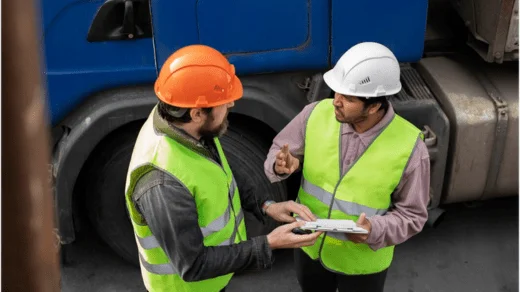Machine rigging plays a critical role in enhancing efficiency in construction projects. It involves the precise handling and movement of heavy equipment and materials. When done correctly, machine rigging ensures that every piece of machinery and structure is safely and effectively positioned for its intended purpose. With the complexity and scale of modern construction, rigging solutions are more necessary than ever.
The Role of Machine Rigging in Construction
In the construction industry, time is always of the essence. Deadlines can be tight, and delays can result in significant cost overruns. Machine rigging helps to mitigate these risks by ensuring that equipment and materials are transported and placed with minimal downtime. Proper machine rigging techniques help avoid accidents, reduce delays, and ensure that the project stays on schedule.
Rigging involves not only the movement of heavy machinery but also the installation of structural elements like beams, steel columns, and precast concrete panels. All these elements require careful planning and execution to ensure they are properly secured and positioned. Rigging specialists use specialized equipment such as cranes, hoists, and slings to move heavy loads safely and efficiently.
The Efficiency Gains of Proper Rigging
Machine rigging provides efficiency gains in multiple ways. First, it streamlines the process of moving large equipment and materials on the construction site. A well-planned rigging operation can move these items quickly, reducing the amount of time spent on setup and re-positioning. This translates into fewer delays and faster project completion.
Safety and Risk Management in Machine Rigging
Machine rigging is not only about efficiency; it is also about safety. Construction sites are inherently dangerous, and the risk of accidents increases when dealing with heavy machinery. The key to minimizing these risks is effective rigging practices. By using the right tools and techniques, riggers ensure that loads are moved without danger to workers or equipment.
Machine Rigging in Large-Scale Projects
In large-scale construction projects, such as skyscrapers or bridges, machine rigging becomes even more critical. These projects require moving massive loads and positioning them with precision. In these environments, rigging techniques must be tailored to the specific demands of the job. Special machinery and equipment, such as tower cranes and high-capacity winches, are often used to lift and place materials at great heights.
Technology and Innovation in Machine Rigging
As construction technology advances, so do the methods used in machine rigging. Innovations such as remote-controlled cranes and automated rigging systems have transformed how rigging is performed. These technologies reduce human error and increase the speed at which tasks can be completed. The integration of AI and sensor technology in rigging operations can also help monitor loads in real-time, ensuring that safety standards are always met.
Conclusion
Machine rigging is a crucial component of modern construction, providing both efficiency and safety on site. From moving heavy materials to ensuring precision in placement, rigging improves project timelines and reduces risks. The growing complexity of construction projects highlights the importance of skilled rigging teams and advanced technology. As the industry continues to evolve, machine rigging will remain essential in ensuring that construction projects are completed on time and within budget.







